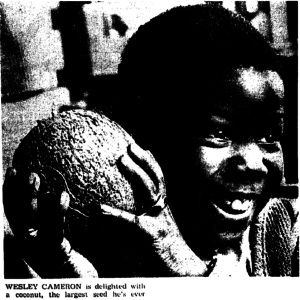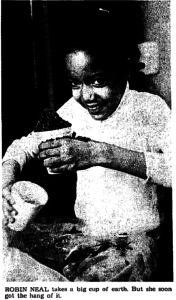“School Volunteers for Boston accomplished what no other organization in the city had yet to achieve: earning the trust of the administration and faculty of the Boston Pubic Schools. This meant that organizations who had felt they could offer a lot to Boston’s students finally had an entry point.”
 When School Volunteers for Boston (“SVB”, the founding name of Boston Partners in Education) first began in 1966, there were many questions as to what role the organization could take in the city. Early on, it made sense that our volunteers would help students with dire needs. The first 28 volunteers focused mainly on helping students who could not speak English succeed in Boston’s classrooms.
When School Volunteers for Boston (“SVB”, the founding name of Boston Partners in Education) first began in 1966, there were many questions as to what role the organization could take in the city. Early on, it made sense that our volunteers would help students with dire needs. The first 28 volunteers focused mainly on helping students who could not speak English succeed in Boston’s classrooms.
However, enthusiasm for the program quickly grew among volunteers and the public schools. Numbers expanded at an astonishing rate, and soon there were more volunteers than even ambitious services, such as the Library Program, could accommodate. SVB also accomplished what no other organization in the city had yet to achieve: earning the trust of the administration and faculty of the Boston Pubic Schools (BPS).
This meant that organizations who had felt they could offer a lot to Boston’s students finally had an entry point. In 1970, the Enrichment Program was born to connect these community partners to students. The Massachusetts Horticultural Society, for example, used SVB to introduce “The Hub-Box” program, and “Plants go to School” in subsequent years, in order to give inner city kids access to scientific education on plant life and growth. “Birds go to School” was a similar project in cooperation with the Audobon Society.
Other organizations also participated in the enrichment activities, including the Institute for Contemporary Art, the Children’s Theatre, the Boston Ballet, and the Boston Symphony Orchestra. The Junior League of Boston provided funding and materials for transportation for many of these partnerships.
The most notable collaboration in those early years in terms of scope was with the Museum of Fine Arts. The program was a product of its volunteers, mostly suburban women with strong connections to the Junior League of Boston, who in turn maintained and ran programs with SVB (and later, Boston Partners in Education) for decades. After an intensive training that took several months, volunteers were given several responsibilities. The goal of the program was to give Boston students access to the museum and maximize the benefit of their visit
Volunteers acquainted students to the museum with a slideshow of artwork. These slideshows covered Egyptian, Asiatic, Classical, and Early American art, as well as museum etiquette and expected behaviors. This preparation had an excellent effect on the students, and one volunteer reported that students would react to the art “as if they were seeing and greeting an old friend.” A week after their tour, the volunteer would return to cover the material once more, and take any questions from the students. One volunteer even composed a handbook for Spanish speaking students, which was used by SVB in the classes where it was needed.
The program exposed 60,000 students to the MFA’s collections in 1974, with the vast majority of volunteers having been recruited through School Volunteers for Boston.
 The Museum trained an excellent pool of committed and inspired volunteers. Each one dedicated three years to the program. Much like the Library Program, a select few volunteers became museum docents, although it was stressed to most of them not to expect a career. According to “The Art Museum as Educator,” the program exposed 60,000 students to the MFA’s collections in 1974, with the vast majority of volunteers having been recruited through SVB.
The Museum trained an excellent pool of committed and inspired volunteers. Each one dedicated three years to the program. Much like the Library Program, a select few volunteers became museum docents, although it was stressed to most of them not to expect a career. According to “The Art Museum as Educator,” the program exposed 60,000 students to the MFA’s collections in 1974, with the vast majority of volunteers having been recruited through SVB.
Connecting students with the vast resources of the city around them was a major part of the mission for SVB (and later Boston Partners). This tradition extended into the late nineties with programs such as AquaSmarts and Masterminding. The MFA program lasted for ten years, fostering a relationship between the museum and BPS, until SVB’s training, recruitment, and involvement were no longer necessary. SVB’s quiet legacy is that such connections, which now seem obvious and necessary, once had to be fostered and nurtured. Today, our mission to be a conduit between community and classroom remains as important as ever.
